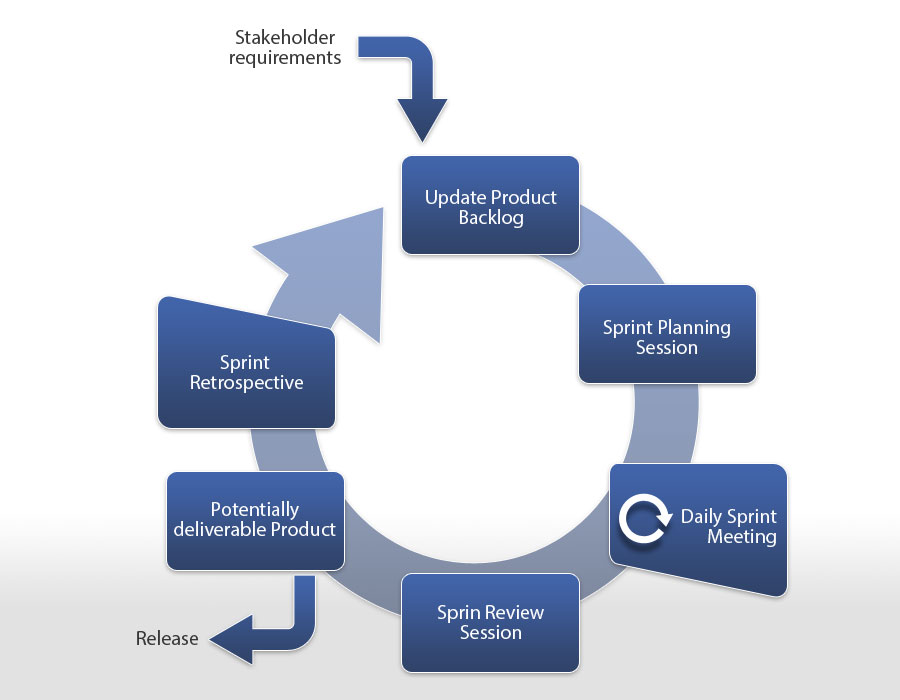3.7 Walkthrough of One Iteration
Before it all starts, the stakeholder and the product owner have a vision about a software product they would like to build. A product requirement engineering process will be performed, and the product owner starts to create the product backlog, which will contain estimation and prioritization of the user stories he adds. In an agile project, this might be a process that is gone over again and again proving it different from a normal waterfall project. In agile, changes are welcome and the product backlog is a living list of business requirements. Now we have a starting point from where the development team can start to do their work following the rules and events of scrum.

Sprint 1 – Day 0
The work of the development team starts with the sprint planning meeting. It is a ceremony which is split into two separate 2-hour meetings. The first is called the WHAT-meeting during which the product owner explains the user stories in the product backlog. The development team makes estimates and arrangements for the workload based on the product backlog list. The team asks questions for clarification to choose a number of user stories that they will implement in the sprint. After this, they move the chosen user stories to the sprint backlog. The second part of the sprint planning meeting is called the HOW-meeting. It is now time for the team to break down the user stories in the sprint backlog into smaller tasks. The task as placed on the scrum board, which can be an electronic board, a physical whiteboard or a task wall.

Sprint 1 – Day 1-28
The development team members start to pick tasks from the sprint board and start working. Within the sprint, a daily scrum meeting is required, and each of the meetings is time-boxed into 15 minutes approximately. Everyone must speak face to face with all members to report what they did yesterday and what they want to do today. If somebody has any impediments (things that hinder or stop them from doing your tasks), these will be mentioned, so the scrum master can help to solve any issues. Next, the sprint burn-down chart is updated. During the sprint it is the scrum master`s job to help to solve impediments, facilitate daily scrum meetings, and keep the team committed. This also includes communication with other managers and line leaders, who are not active members of the team. This is a very important task, because it is impossible for the team to keep their commitment if they are dragged to other assignments that are not part of the committed sprint backlog list.
Sprint 1 – Last Day
On the last day of the sprint it is time for the sprint review. During the sprint, the team have collaborated efficiently and together they have reached the sprint goal. They now have a valuable increment to demonstrate to the product owner and any invited stakeholders. A review is also a celebration and something the team should look forward to. Normally, this is held in a form of a presentation of the work performed. The sprint review is an inspect-and-adapt opportunity, and the product owner can explain how well the product is performing to other stakeholders present. If any work has not been completed for whatever reason, then this will also be reviewed and re-estimated on the product backlog for possible planning into future sprints.
The sprint review looks at the product, but it is also important to look at how the team have worked during the sprint; hence, the next thing to do is to conduct a sprint retrospective. This focuses on how the team is working, what went well, what was not so good, what shall the team keep doing, what shall they stop doing, and an action list is created. The whole development team, the product owner, and the scrum master must all attend the Retrospective, because everyone is jointly responsible for the success of the team’s work. It is important to have a free and open session that gets to the heart of any problems and identifies actions which will help to solve them. In a Retro, everyone has an equal voice.
This is the end of a sprint cycle and the whole process starts again with another sprint.
